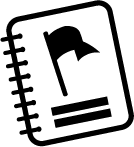Right Medication.Any teachers administering the medication should check the medication against the signed form to ensure that the name of the medication on the bottle or package matches that exactly on the signed form. Each time the medication is administered, this should be checked. The medication should be kept in its original container. Right Child.During certain seasons of the year when multiple children need medication or if your program has several children enrolled who need medication support (such as for diabetes, asthma, or attention deficit hyperactivity disorder), the risk increases for improper medication administration. Forms and medication need to be checked to ensure that the right child is receiving the medication. Right Dose.Confirmation needs to be made that the right dose has been measured. An excellent way to ensure this is to use the medication spoon dispensed with the medication by the pharmacy. Medication administration is not the place for guesswork. Any questions should be referred back to the family for clarification. Right Time.Timing of the medication should be clearly written on the medication itself and on the signed form. Additionally, teachers need to confirm with families when the child arrives as to when the last dose of medication was administered andwhen the next one is due. This information should be documented, for example, on the child’s daily sheet or a medication administration form. Work with your coach, or licensing agency to ensure that you have the proper documentation required by your Service or state. Likewise, when the child is picked up by the family, the teacher should provide written documentation of medication administration. Right Route.Medication can be delivered in a number of ways; usually the medication to be delivered by teachers is through oral dispensing or through an inhaler. Confirmation of method should be written on the medication itself as well as on the signed form. Right Reason.Each time medication is given, the person administering it should make sure that the medication is being given for the right reason (e.g., Tylenol for teething pain, breathing treatment for asthma attack). Consulting the health-care plan or inclusion support plans for the appropriate symptoms can help ensure that the medication is given for the correct reasons. Right Documentation.Each administration of medication should be recorded. The teacher who gave the medication should document the administration immediately each and every time after he or she has provided a dose (after washing his or her hands). This is a critical step. Without proper documentation, another adult or the child’s family member may not appropriately provide the next dose of medication, which could have serious health implications for the child.
Adapted from American Academy of Pediatrics’ Medication Administration Curriculum |


